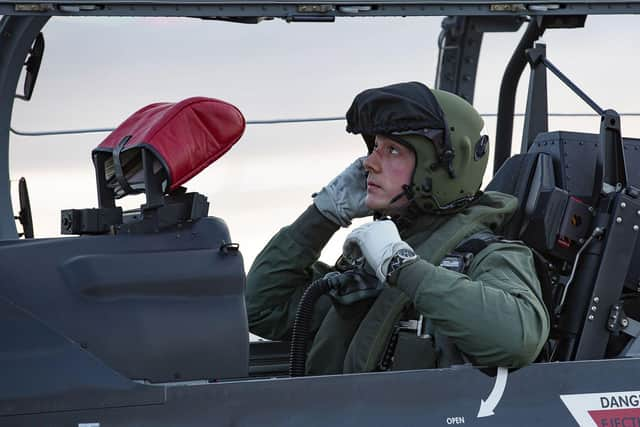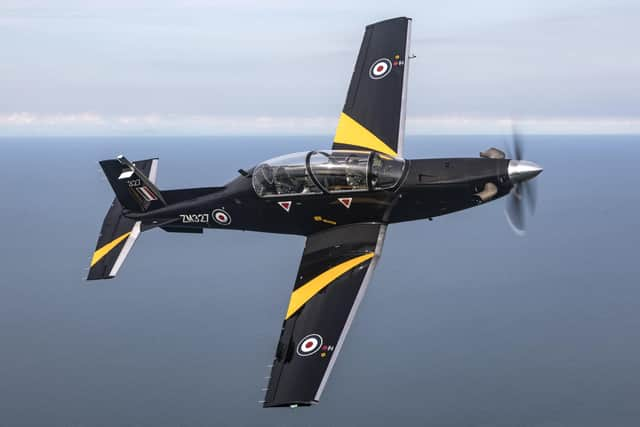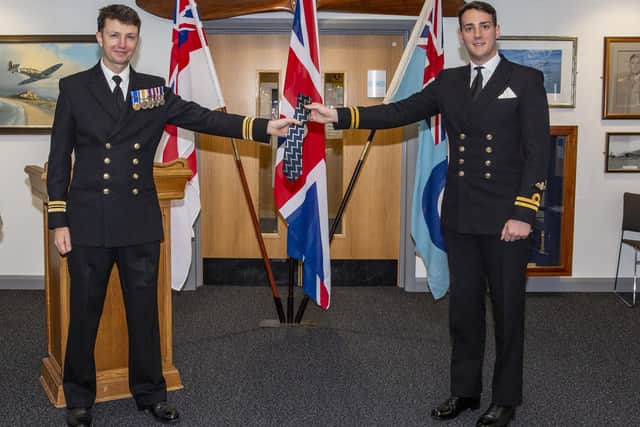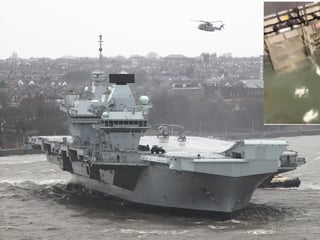Royal Navy pilot from Portsmouth makes aviation history in new test jet
This article contains affiliate links. We may earn a small commission on items purchased through this article, but that does not affect our editorial judgement.
and live on Freeview channel 276
A year ago, Lieutenant Lewis Phillips became the first trainee pilot to fly solo in a Texan and now he is the first Fleet Air Arm flier to earn his Wings in the aircraft.
The 30-year-old aviator from Portsmouth received the prestigious emblem of a qualified pilot after a year of training at Anglesey's RAF Valley in the Texan T1.
Advertisement
Hide AdAdvertisement
Hide AdFirst in classrooms and simulators, and then the Texan's cockpit, he learned the fundamentals of handling a jet-engine aircraft.


This included formation flying, low-level navigation, and coping with all weather conditions.
Lt Phillips said he was ‘honoured’ to be the first Royal Navy pilot to graduate with Wings on the Texan T1.
‘It certainly isn't lost on me that I wear the same uniform – and now the same Wings – as all those who came before me,’ he said.
Advertisement
Hide AdAdvertisement
Hide Ad

The Texan T1 aircraft replaced the analogue Tucano, which had served fast-jet pilots for 30 years, but was declared obsolete due to today’s fully-digital jets and helicopters.
With a fully digitised cockpit, the Texan is capable of reaching top speeds of more than 360mph and climb as high as 31,000ft.
This means students have to get used to wearing a G-suit to counter the effects of gravity, an immersion suit in case the Texan has to ditch and an oxygen mask rather than breathing normally.
‘Having a ‘glass’ cockpit is also a huge benefit and step change in training, allowing instructors to deliver electronic warfare threats we need to defend against and make a sortie feel a lot more realistic,’ Lt Lewis added.
Advertisement
Hide AdAdvertisement
Hide Ad

Previously, Lt Phillips spent nine years as an air traffic control officer for the navy before he swapped the control tower for the cockpit.
As part of an exchange programme with the US, Lt Phillips will get his first jet experience in a T45 Goshawk trainer, the US Navy’s counterpart to the Hawk.
He will then move onto the F-18 Super Hornet, the mainstay of combat operations on America’s carrier fleet.
Looking for the latest Royal Navy updates from Portsmouth? Join our new Royal Navy news Facebook group to keep up to date.
A message from the Editor, Mark Waldron
The News is more reliant than ever on you taking out a digital subscription to support our journalism.
You can subscribe here for unlimited access to Portsmouth news online - as well as our new Puzzles section.
Comment Guidelines
National World encourages reader discussion on our stories. User feedback, insights and back-and-forth exchanges add a rich layer of context to reporting. Please review our Community Guidelines before commenting.
